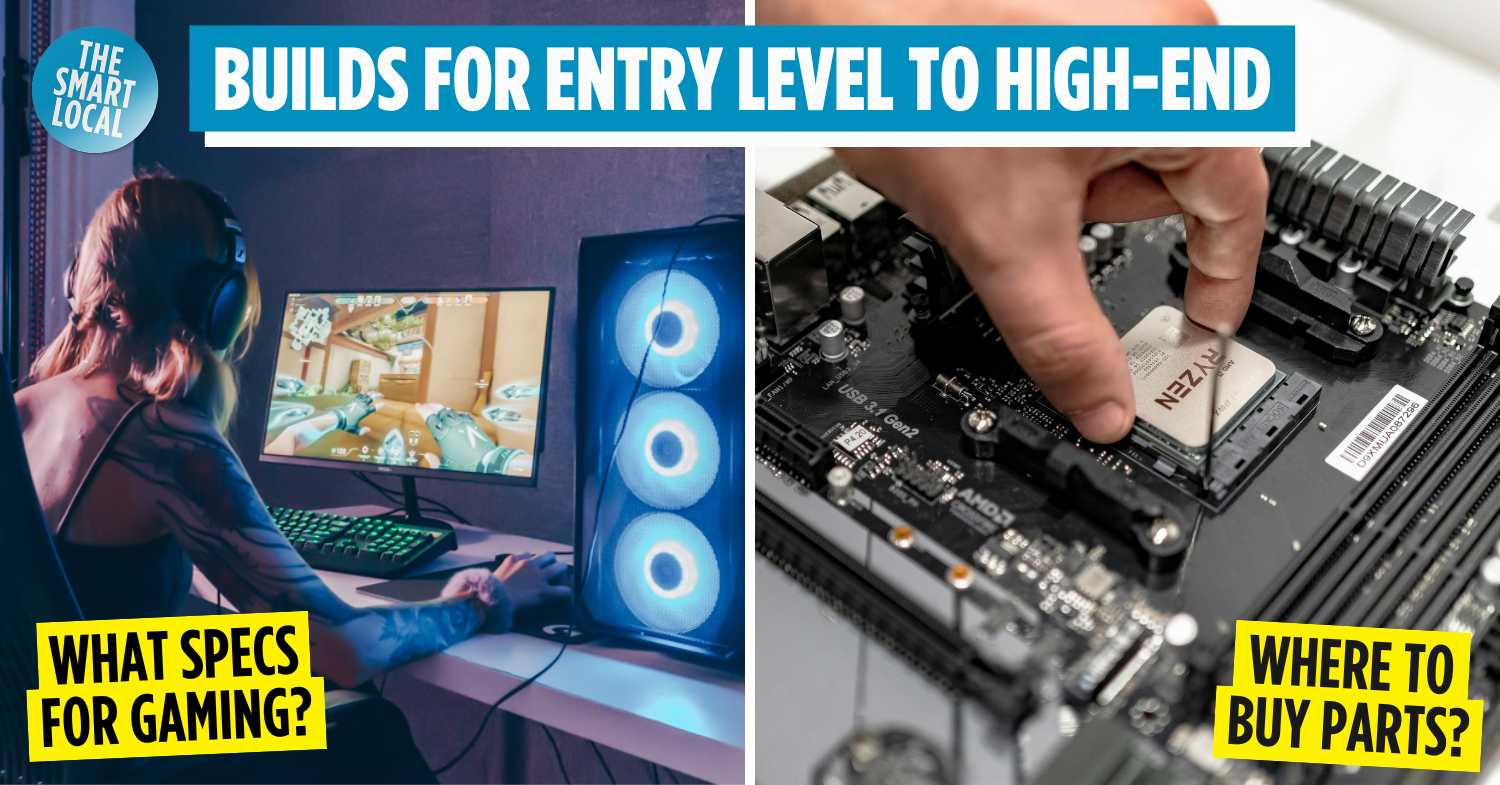Guide to building a gaming PC from scratch
Alright I’ll admit it; despite being an avid gamer myself, I don’t have the slightest idea when it comes to building a gaming PC, as I’ve always resorted to buying pre-built ones instead.
But, taking the time to learn how to build your own battlestation can be pretty rewarding too. For starters, you get to tailor your build and budget based on the games you’d like to run, potentially saving you hundreds on costly components.
Moreover, Black Friday is just around the corner; that means there’s no better time to get your hands on computer parts for slashed prices. Whether you’re planning to surprise someone dear to you with the best Christmas gift a gamer could ask for, or looking to upgrade your personal rig, here’s a handy guide to building a gaming PC from scratch.
P.S. We got all our parts from Amazon Singapore. They’re running a Black Friday Sale from 21st November – 2nd December 2024 where you can get discounts of up to 66% off. TSL readers can even enjoy $10 off a minimum $60 spend.
Table of Contents
Price breakdown of materials needed to build a gaming PC
| Part | Entry-Level | Mid-Range | High-End |
| CPU | AMD Ryzen 5 5600G
Price: from $178 |
Intel Core i5-12600K
Price: from $224.03 |
AMD Ryzen 7 7800X3D
Price: from $697.01 |
| GPU | AMD RX 6600
Price: from $294.22 |
NVIDIA RTX 3060 Ti
Price: from $591.20 |
AMD RX 7900 XT
Price: from $696 |
| Motherboard | ASRock B450 STEEL LEGEND
Price: from $160.36 |
ASRock Z690 Phantom Gaming-ITX/TB4
Price: from $269.02 |
MSI MAG X670E Tomahawk WiFi
Price: from $369.52 |
| RAM | OLOy DDR4 RAM 16GB
Price: from $47.89 |
Price: from $142.69 |
|
| Storage |
Kingston 1000G NV2 M.2 2280 PCIe 4.0 NVMe SSD Price: from $78.40 |
||
| PSU | Corsair CV550
Price: from $86.98 |
EVGA SuperNOVA 650 G+
Price: from $236.60 |
Seasonic Vertex PX-750
Price: from $287.20 |
| Case |
Price: from $134 |
Fractal Design Pop XL Full-tower Gaming PC Case
Price: from $180 |
|
| CPU cooler | CPU stock cooler
Price: free |
Cooler Master Hyper 212
Price: from $49 |
Cooler Master LiquidMaster 360L Core
Price: from $109 |
| Monitor | MSI Optix G244F E2
Price: from $197.67 |
Prism+ W240
Price: from $249 |
BenQ EW3280U
Price from $869.50 |
| OS |
Windows 11 Price: Free |
||
| Total cost | $1,177.52 | $1,973 | $3,429.32 |
Computers parts needed to build a gaming PC
1. Processor (CPU) – Brain of the computer that runs everything else

Image credit: @amd via Instagram
First off, you’re gonna want to decide on a CPU, or a central processing unit. In simplest terms, a CPU functions as your computer’s brain, as it’s responsible for processing instructions, performing logical and mathematical operations, and executing instructions that it is given.
A CPU’s performance varies based on a couple of factors. This includes the number of cores it has; the more cores a CPU has, the greater the number of instructions it can execute at a time. A CPU’s cache size also affects its performance – the bigger its cache, the less time the CPU’s processor has to wait for instructions to be fetched.
When it comes to settling on a CPU, there’re really only 2 brands to base your build off of: AMD and Intel. There’s not much of a difference between the 2, so it’s really up to you to decide if you’re team AMD or team Intel. Regardless of which you pick, here are a couple of options you can consider:
Entry-Level: AMD Ryzen 5 5600G (from $178)
Reliable and cost-effective, with decent integrated graphics if a GPU upgrade is planned later.
Mid-Range: Intel Core i5-12600K (from $224.03)
Great for gaming and streaming, with solid multitasking performance.
High-End: AMD Ryzen 7 7800X3D (from $697.01) or Intel Core i7-13700K (from $584)
Excellent for high-performance gaming and streaming.
2. Graphics Card (GPU) – Renders images smoothly to prevent lag
 Image credit: NVIDIA
Image credit: NVIDIA
You’ve probably seen this acronym thrown around a lot in the gaming sphere. A computer’s GPU, or graphics card, is the component that’s responsible for handling graphics-related work, such as rendering and displaying images, videos, and animations.
Although some PCs come prebuilt with an integrated graphics card that can support basic graphic needs, you probably will have to go for a dedicated GPU for lag-free gameplay if the games you play have very detailed graphics. When shopping for GPUs, the 2 main brands you’d want to keep an eye out for are NVIDIA and AMD; here are some you can take a look at:
Entry-Level: NVIDIA GTX 1660 Super (from $277.33) or AMD RX 6600 (from $294.22)
Great for 1080p gaming on medium settings.
Mid-Range: NVIDIA RTX 3060 Ti (from $591.20) or AMD RX 6750 XT (from $481.06)
Runs most games smoothly at 1080p or 1440p on high settings.
High-End: NVIDIA RTX 4070 Ti (from $1,361.44) or AMD RX 7900 XT (from $696)
Perfect for ultra settings at 1440p or even 4K gaming.
3. Motherboard – Circuit board that powers internal components
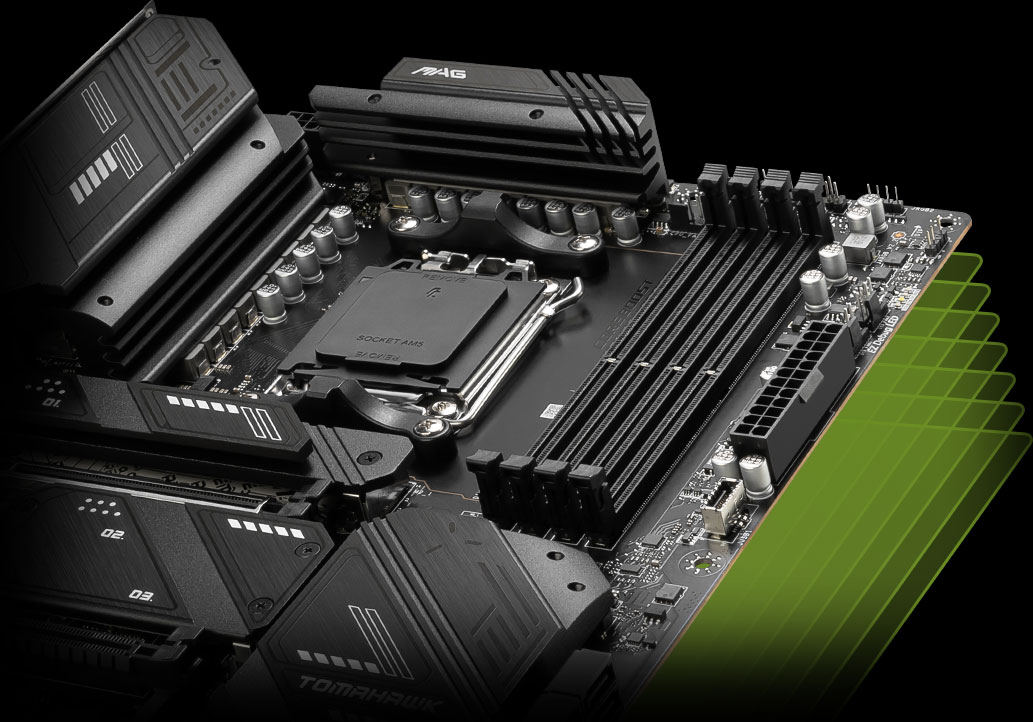
Image credit: MSI
An essential piece of your build to make everything tick is the motherboard. It’s the main circuit board in a computer that connects all of its internal components in order for them to communicate with one another, and provides power to them. The motherboard is essentially what the rest of your parts within the PC plugs into to run.
There are different types of motherboards on the market, each designed to be compatible with specific builds and sizes. Here are some that you can consider:
Entry-Level: B450 (from $160.36) for AMD builds or B660 (from $141.22) for Intel builds.
Mid-Range: B550 (from $134.51) for AMD builds or Z690 (from $269.02) for Intel builds. Supports faster RAM and more expandability.
High-End: X670E (from $369.52) for AMD builds or Z790 (from $266.62) for Intel builds. Best connectivity options and features for future-proofing.
4. Memory (RAM) – Short-term memory used to run applications
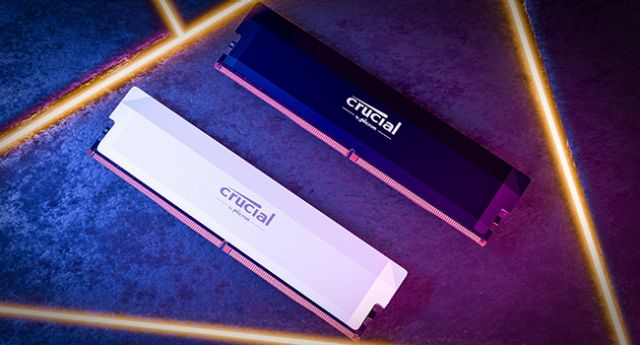
Image credit: Crucial
And we’re back to the acronyms – RAM, or random access memory is your computer’s short term memory, where data is stored that the CPU, GPU, or any other component needs in order to run applications.
It’s measured in bytes, and as far as gaming is concerned, we recommend fitting your build with at least 16GB of RAM. Go for 32GB if you plan on running modern, graphics-heavy titles at a decent amount of FPS (frames per second). For those with AMD builds, it’s recommended to get RAM that has a speed of 3200MHz or higher, while Intel builds ask for RAM speeds of 3600Hz or higher.
Adding RAM is also a pretty reliable way to improve your PCs performance, so feel free to buy extra sticks of RAM in the future to stick into your build to remedy lag issues. That said, here are some options you can consider:
Entry-Level: 16GB (2x8GB) DDR4 (from $47.89)
Mid-Range or High-End: 32GB (2x16GB) DDR4/DDR5 (from $142.69)
5. Storage – Long-term storage for operating system, files & programmes
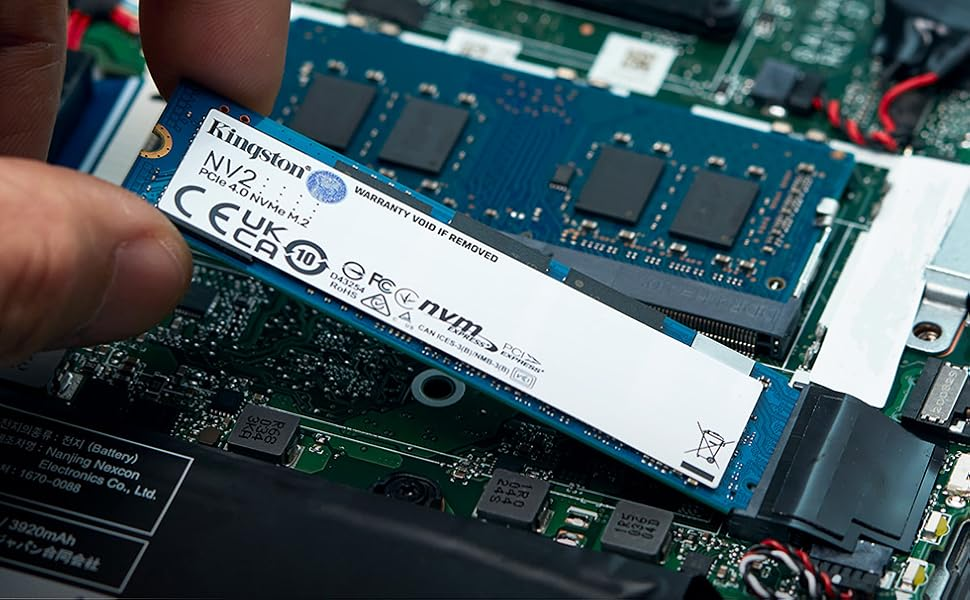
Image credit: Kingston
You’ll be needing a space to stash away all your downloaded games onto your PC, and that’s where computer storage comes into play. It allows a computer to store and access files and programmes, keeping them intact even after your PC is switched off.
When looking for storage, it’s really a matter of how big the files you’re planning to store on your hard drive are. If you’re also planning on using the computer to edit raw photos or videos then getting a bigger hard drive would make sense. The 2 main types of computer storage to choose from when building a gaming PC are HDDs (hard disk drives) and SSDs (solid state drives).
For all levels: 1TB NVMe SSD (from $78.40)
Add on (if need more storage): 2TB HDD (from $95.61)
6. Power Supply Unit (PSU) – To power all components of the computer
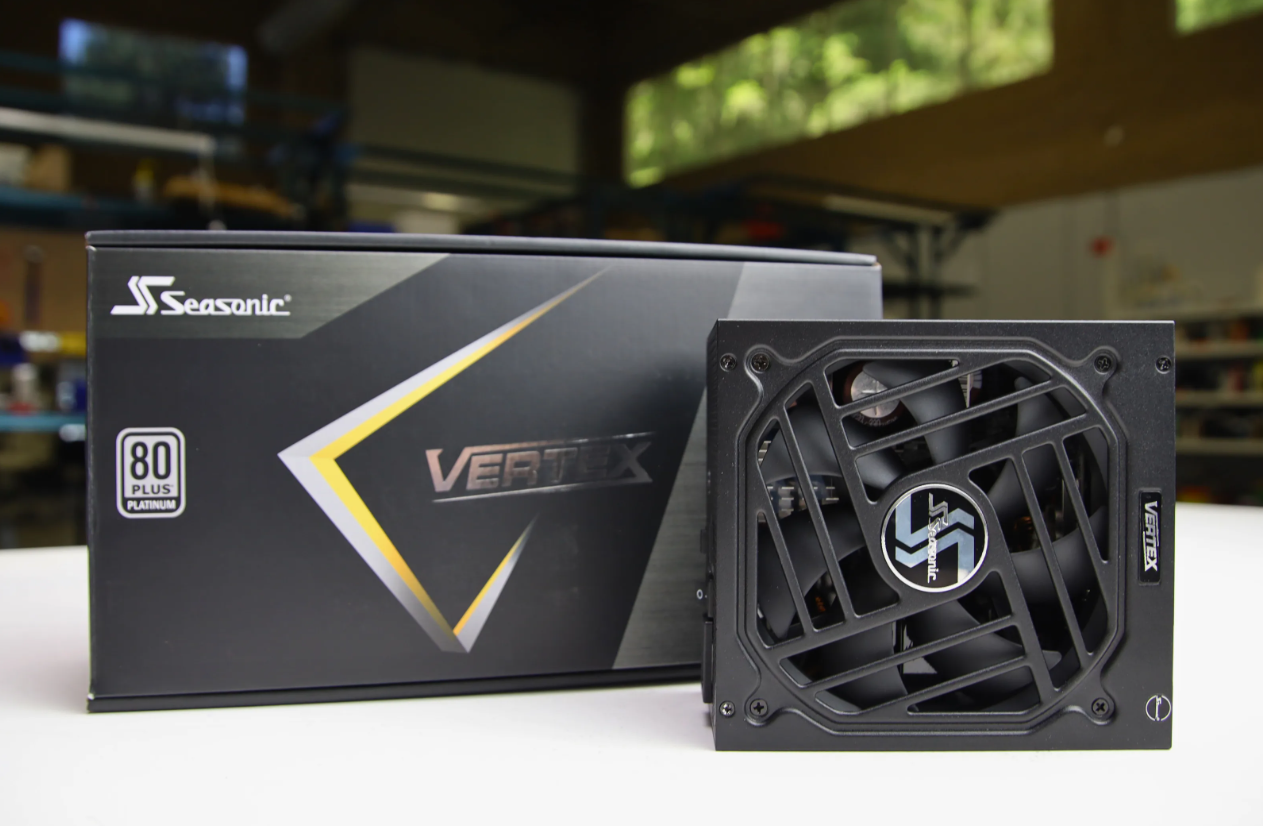
Image credit: LTT Labs
Like its name suggests, the PSU, or power supply unit, is what’s going to be providing the power for your build. In simple terms, it does so by converting the alternating current from a wall socket to a low voltage, direct current to operate your PC’s components, such as its motherboard and CPU.
The main thing to keep in mind when shopping for a PSU is its wattage rating. More complex builds will require a higher wattage compared to simpler ones, but if you’re unsure how much wattage your build needs to run, you can use a power supply calculator to find out. Here are a few PSUs to choose from, each with a different wattage rating to choose from:
Entry-Level: 550W 80+ Bronze-rated (from $86.98)
Mid-Range: 650W 80+ Gold-rated (from $236.60)
High-End: 750W+ 80+ Platinum-rated (from $287.20)
7. Case – Holds everything in place
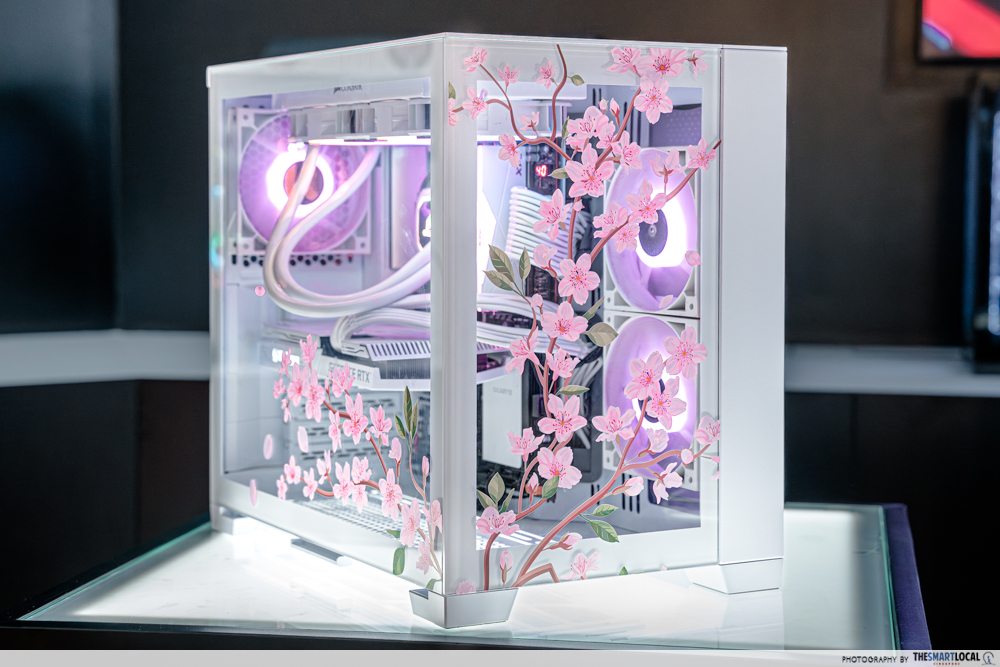
You’ll also want to get a PC case to house all your computer parts and to hold them in place. There are a few sizes to choose from, so get the one that best suits your needs
Mini-ITX: Smallest case size, best for people looking for builds that take up minimal space while still being able to accommodate a decent-sized graphics card.
Micro-ATX: Smaller than a full-sized PC, but larger than a Mini ITX.
Mid-tower: The most popular size gamers go for, able to fit larger motherboards, can house more complex CPU cooling systems, multiple GPUs, and lots of computer storage.
Full-tower: The largest case size, practically able to fit components of every size at the cost of being quite bulky.
When deciding on a case, pick one case with good airflow and cable management options. Some brands to consider include NZXT, Fractal Design, and Corsair as they offer solid entry-to-high-end cases of varying sizes. Cases are also where you can get creative, as they come in a variety of styles; go for flashy RGB ones for maximum eye candy, or keep it simple with a minimalist design.
Mini-ITX (from $99)
Micro-ATX (from $79)
Mid-tower (from $134)
Full-tower (from $180)
8. CPU cooler – Brings down temperature of computer components
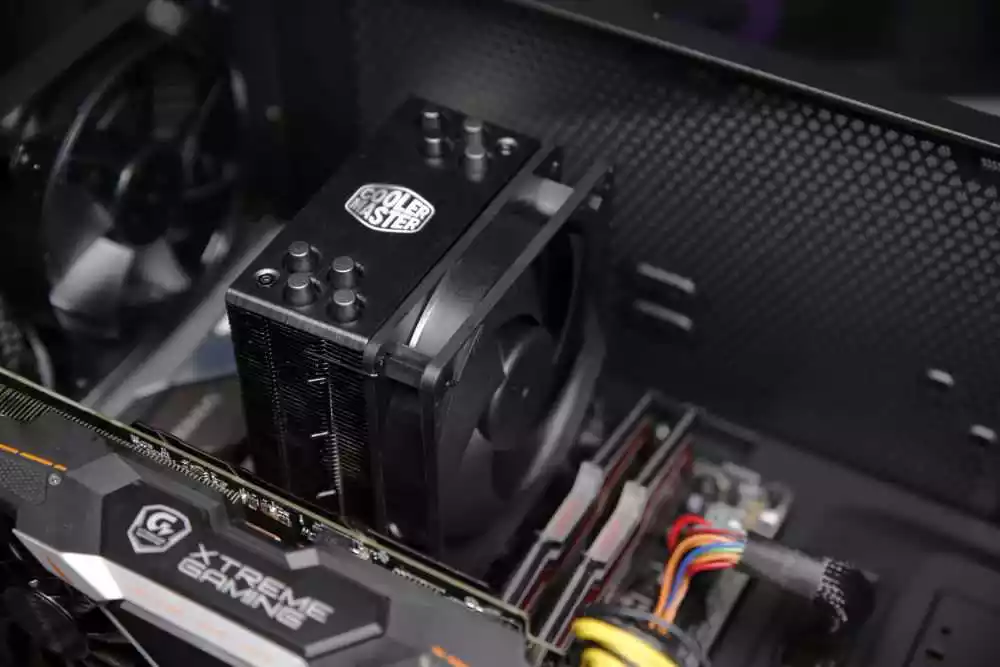
Image credit: Cooler Master
Things can get pretty hot within your PC when you’re running hardware-intensive games or programmes, and so you’ll need a CPU cooler to remedy any overheating. It’s a component that uses fans, radiators, and other elements to draw heat away from vital parts of your computer such as its CPU.
CPU coolers come in many forms, such as air coolers which use a heat sink to disperse heat, and liquid coolers that use a liquid instead to dissipate heat. When choosing a CPU cooler, do make sure that it’s compatible with your motherboard and CPU’s socket type.
Entry-level: Use the stock cooler if your CPU comes with one.
Mid-Range: Cooler Master Hyper 212 (from $49)
High-End: AIO liquid cooler (from $109)
9. Computer monitor – Displays running OS & software
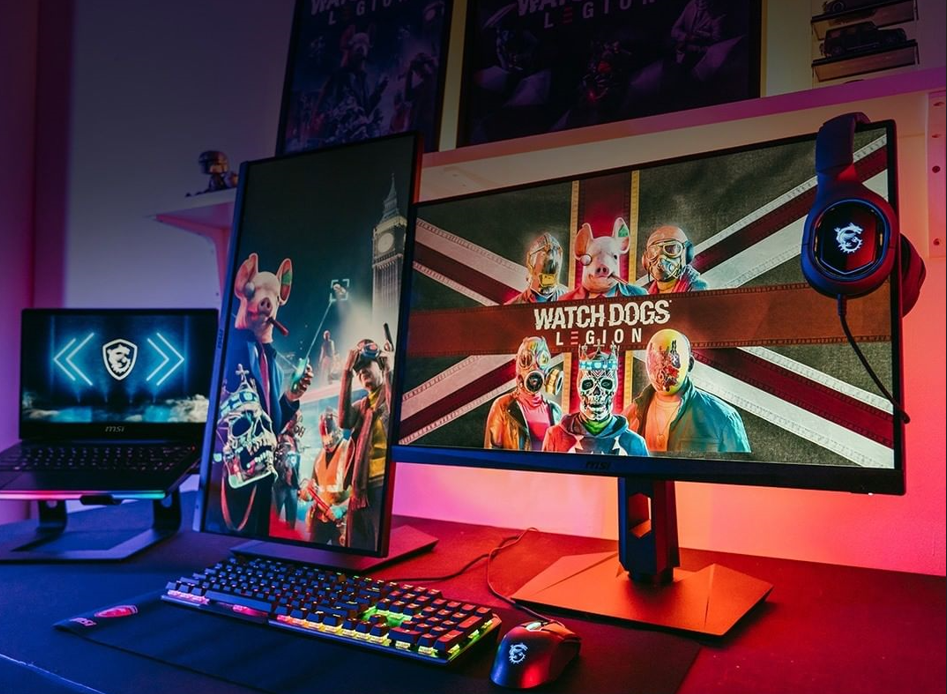
Image credit: @msigaming via Instagram
Of course, you’ll need a monitor for you to see what’s going on when you boot up your rig. They come in a variety of types, but modern monitors typically use an LCD display with an LED backlight. Size is also another important factor to consider, as you’ll want to make sure you have enough desk space to fit your monitor.
Depending on your budget, some monitors perform better than others. More expensive monitors have a higher refresh rate that result in buttery smooth graphics, and they also might have a sharper display resolution for better viewing.
Entry-Level: MSI Optix G244F E2 (from $197.67)
Mid-Range: Prism+ W240 (from $249)
High-End: BenQ EW3280U (from $869.50)
10. Operating System – Software that runs hardware & applications
Last but not least, every computer needs an OS, or operating system, to function. It’s a software programme that manages a computer’s hardware and software, and is what allows users to interact with the computer through a user interface (UI).
Almost all gaming rigs out there default to using the Windows OS, as it has the best compatibility and performance with games and is convenient to use.
Download Microsoft Windows 11 OS.
To install Windows 11 onto your PC, select the Disk Image (ISO) for x64 devices onto a USB flash drive that will allow you to boot onto a computer built from scratch.
Steps to build your own computer
Just because you have the parts, doesn’t mean you actually have a working computer yet. Don’t worry, we show you just how to put the pieces together, as well as how to troubleshoot common issues.
1. Prepare your workspace, parts & tools
Once you’ve gathered all the various components to build your very own gaming PC, it’s time to put everything together. To prevent any mishaps, prepare a clean, static-free workspace by touching something metal to remove any static charge.
Unless you want to fiddle with tiny screws with your bare hands, you’ll also need some tools to help you out; here are some that are handy to have by your side while building your PC:
Tools needed:
- Magnetic Philips-head screwdrivers – magnetised heads help screws from falling off
- Small bowl – to keep screws in
- Zip ties – for cable management
- Thermal paste (optional) – to improve heat coupling between different components
- Compressed air (optional) – to remove excess dust
2. Install the CPU
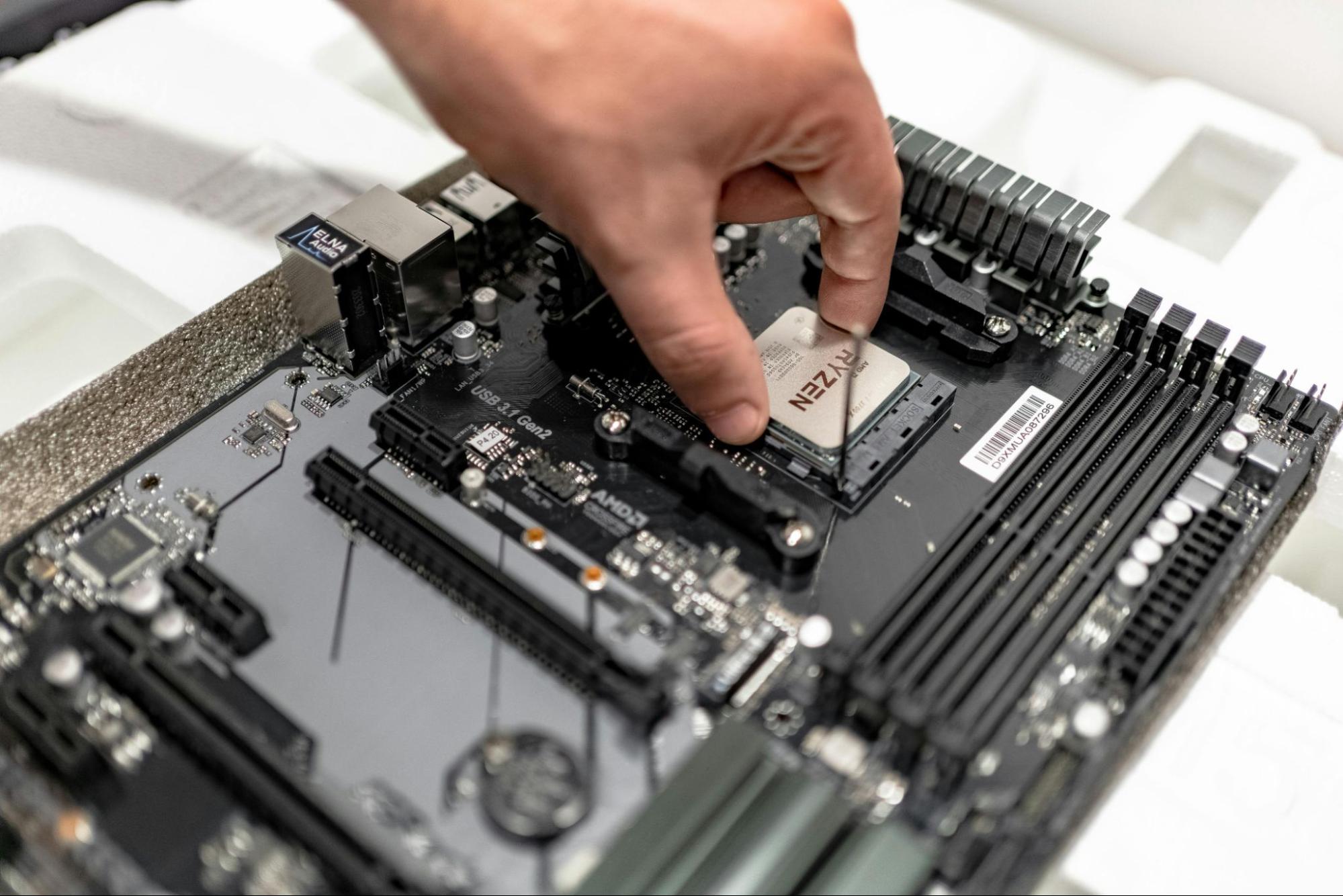 Image credit: IT services EU via Pexels
Image credit: IT services EU via Pexels
- Open the motherboard CPU socket.
- Align the CPU correctly by lining up the triangular alignment markers (usually found on upper left for AMD CPUs, and lower left for Intel CPUs) on the CPU with the motherboard’s socket.
- Gently place it in and secure the latch.
Issue: The CPU won’t fit, or the pins get bent.
Troubleshooting
- Double-check the triangular alignment markers on the CPU and socket. Never force the CPU into the socket.
- If pins bend, gently straighten them with a credit card or a mechanical pencil without the lead.
3. Install the RAM
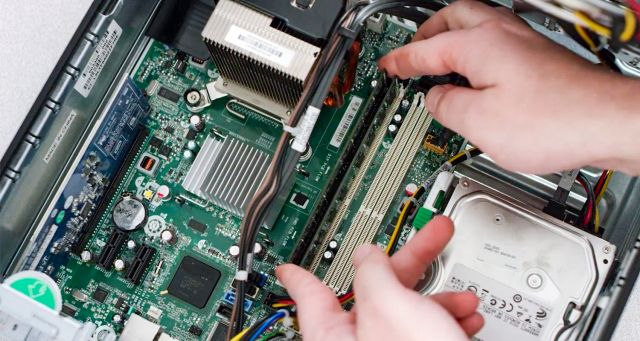
Image credit: Crucial
- Insert RAM sticks into the motherboard slots, ensuring they’re fully clipped in.
- No gold contacts should be showing – it might take quite a bit of force to slot them in, and they will pop in with a clicking sound.
- Use dual-channel slots (usually every other slot) for optimal performance.
Issue: RAM doesn’t click into place, or the system doesn’t boot.
Troubleshooting:
- Ensure the notch on the RAM matches the slot. Push firmly until you hear a click.
- If the system doesn’t boot, check the motherboard manual for the correct slots (dual-channel memory requires specific slots, usually alternating ones).
4. Install the storage (SSD)
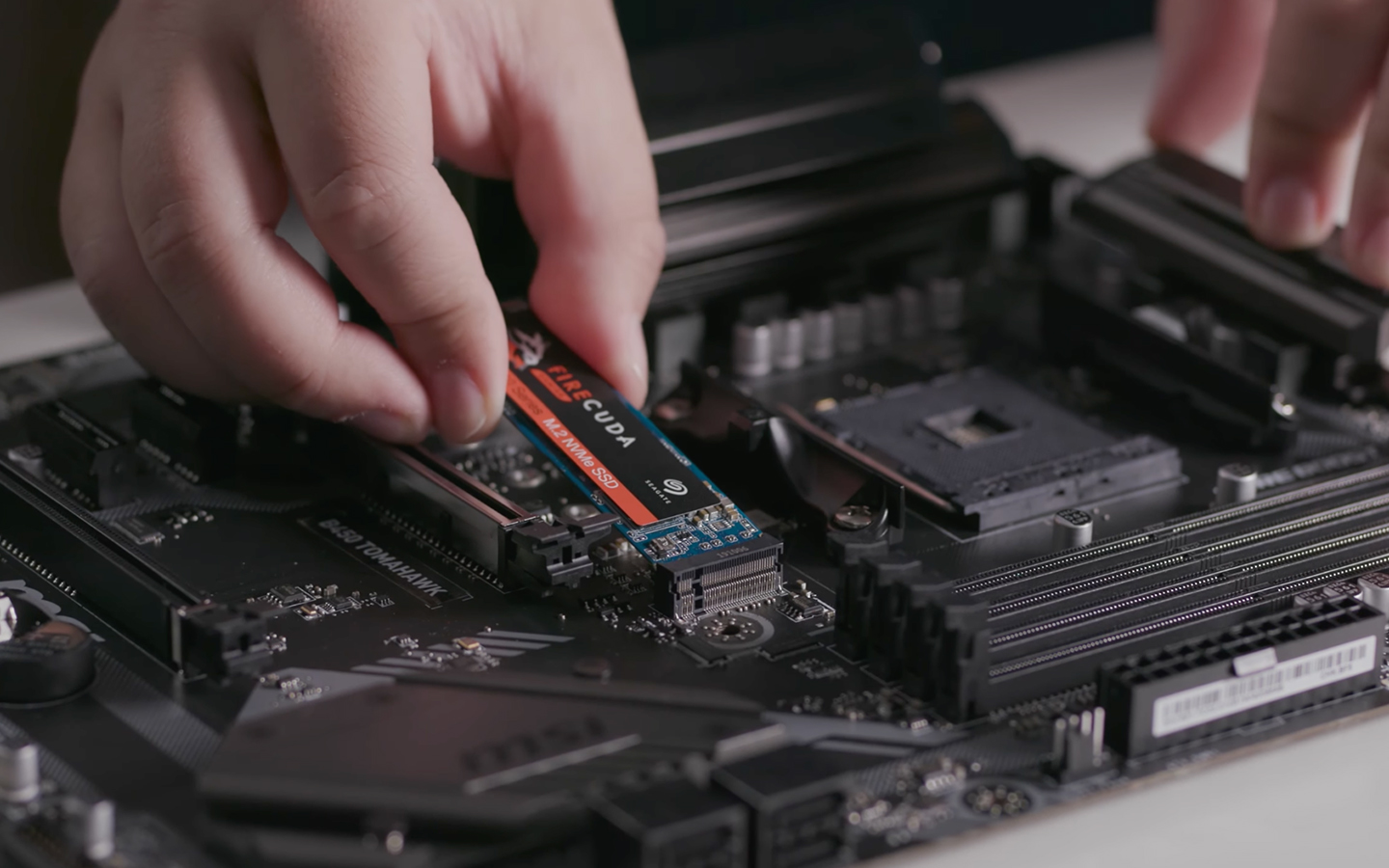 Image credit: Seagate
Image credit: Seagate
- Locate the M.2 slot on your motherboard. It’s usually labelled and might have a small screw already in place.
- Remove the screw if it’s present.
- Align the SSD’s connector edge at an angle, push it down until it lies flat on the motherboard, and screw it in place.
Issue: SSD or HDD not detected.
Troubleshooting:
- For M.2 SSDs, ensure they are installed in the correct slot (some slots may disable others due to motherboard limitations).
- For SATA drives, check the cable connections to both the motherboard and PSU.
- Enable the drive in BIOS if it isn’t automatically detected.
5. Mount the motherboard
- Place standoffs in your case where the motherboard screws will go.
- Align the motherboard with the standoffs, then secure it with screws.
- Be sure not to overtighten the screws
Issue: Short circuits from missing standoffs or misalignment.
Troubleshooting:
- Install all standoffs in the case before mounting the motherboard.
- Ensure the motherboard’s backplate (I/O shield) is aligned correctly.
6. Install the Power Supply (PSU)
- Mount the PSU in the PSU bay which is usually at the bottom of the case, on its back
- Route the cables through the cable management grommets.
7. Install the GPU
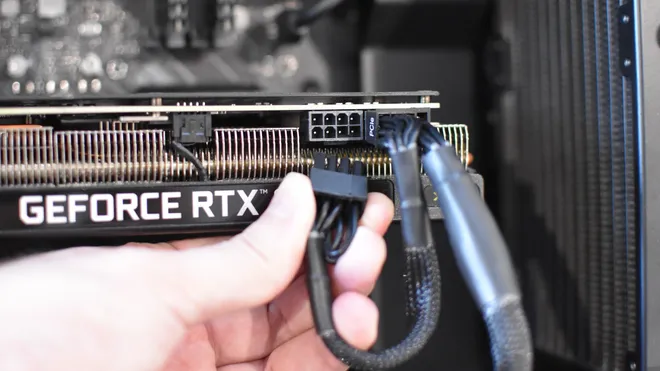
Image credit: Rock Paper Shotgun
- Insert the GPU into the PCIe slot on the motherboard.
- Secure the GPU with screws and connect power cables from the PSU if needed.
Issue: GPU doesn’t fit or the system doesn’t detect it.
Troubleshooting:
- Remove any unnecessary expansion slot covers on the case.
- Ensure the GPU is fully seated in the PCIe slot and secured with screws.
- If the system doesn’t detect the GPU, ensure the power cables are properly connected and that the monitor is plugged into the GPU, not the motherboard.
8. Connect the cables
- Connect the PSU to the motherboard, by attaching its main power cable which is usually the one with the largest plug to the long rectangular port on the motherboard.
- Connect the PSU to the rest of your computer’s components such as the CPU, storage, and any other peripherals.
Issue: Components don’t power on.
Troubleshooting:
- Double-check all connections:
- 24-pin connector to the motherboard.
- CPU power cable (4-pin or 8-pin).
- GPU power cable (6-pin, 8-pin, or more, depending on your card).
- Make sure the power supply switch is turned on, and the wall outlet works.
Issue: Power button or case lights don’t work.
Troubleshooting:
- Refer to the motherboard manual for the correct pin configuration for the power/reset buttons and LED connectors.
- Double-check that the small connectors are inserted the right way (the positive and negative polarity matters for LEDs).
9. Install additional cooling (optional)
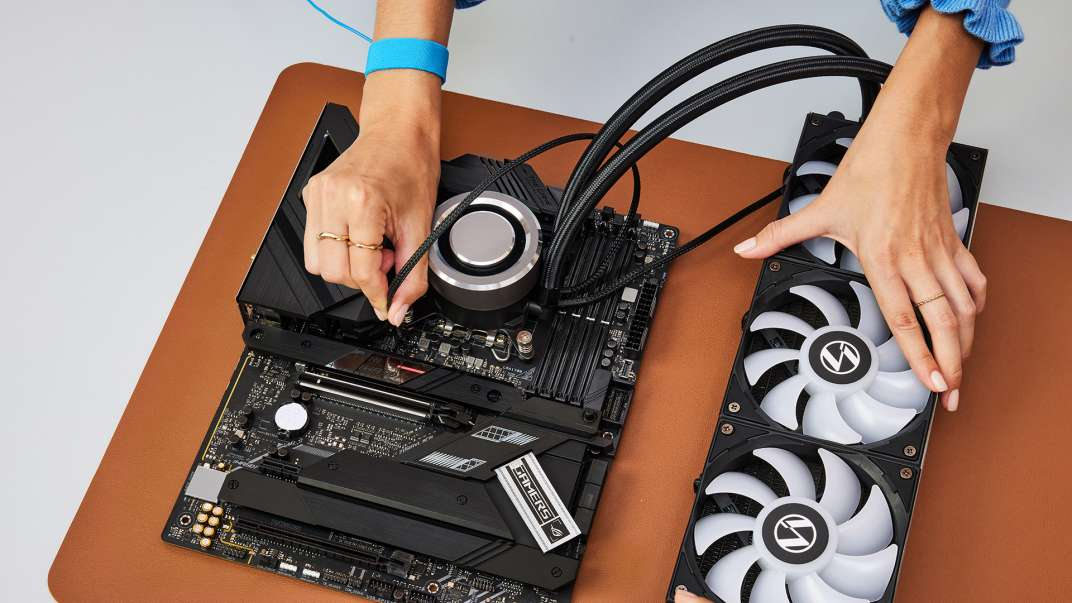
Image credit: Intel
- For better airflow, add fans to the case (e.g., 2 front intake, 1 rear exhaust).
Issue: CPU or GPU temperatures are too high.
Troubleshooting:
- Ensure the CPU cooler is properly seated and secured. Reapply thermal paste if necessary.
- Verify all case fans are spinning and oriented correctly (intake at the front/bottom, exhaust at the rear/top).
10. Power up and install the OS
- Connect your PC to a monitor and plug in peripherals.
- Enter BIOS by pressing F2 or DEL on startup to check that all components are recognized.
- Install Windows, then download drivers and gaming software.
Issue: The system powers on but doesn’t boot (no display, beep codes).
Troubleshooting:
- Check BIOS for Error Codes: Some motherboards have debug LEDs or beep codes to indicate what’s wrong. Refer to the manual.
- Reseat Components: Remove and reinstall the CPU, RAM, and GPU to ensure proper contact.
- Reset CMOS: Use the jumper or remove the motherboard battery for a few seconds to reset BIOS settings.
Build your own gaming PC with Amazon Gaming Store
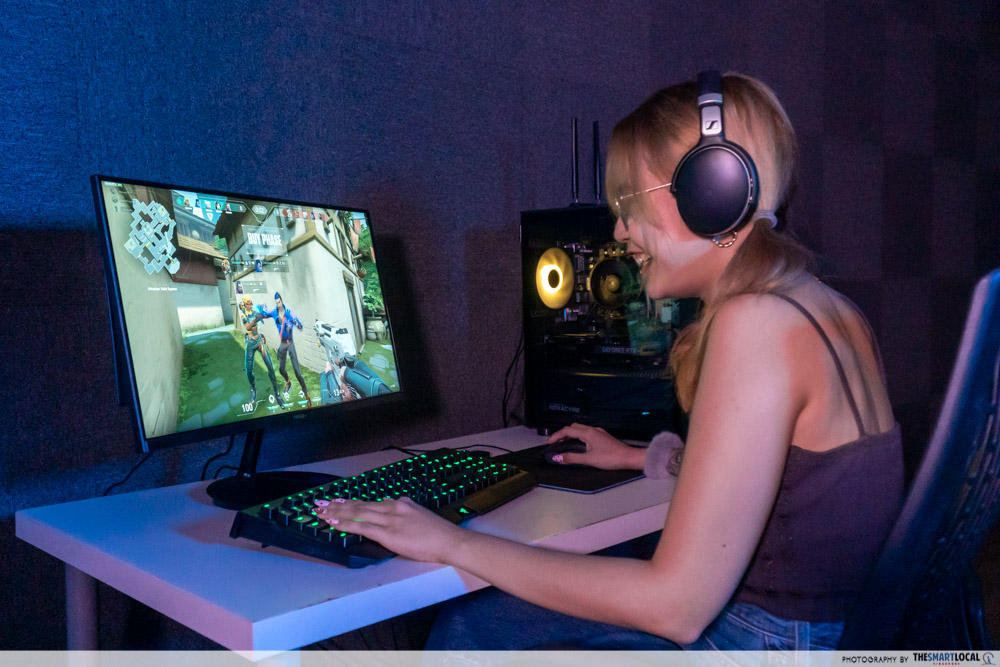
Now that you’re all caught up with how to build a gaming PC, it’s time to put theory into practice by putting together one on your own. If you’re raring to pick up your screwdrivers and start tinkering around, the Amazon Gaming Store is just the place for you.
It’s an online store that stocks everything you’d need to start you off on your PC-assembling journey, from the top-of-the-line GPUs for high-end builds to cost efficient CPUs for those on a budget. It even has other accessories like gaming chairs and other peripherals such as mice and keyboards to round off your set-up.
Don’t forget that you can shop Amazon’s Black Friday Sale from now till 2nd December 2024 to enjoy up to 66% off PC parts. TSL readers can also score $10 off a minimum spend of $60 through the link below:
Shop for PC parts during the Black Friday Sale on Amazon
This post was brought to you by Amazon Singapore.
Cover image adapted from: IT services EU via Pexels
